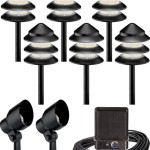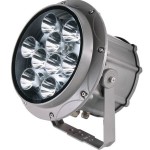How To Remove Black Stains From Outdoor Wood Furniture
Outdoor wood furniture provides aesthetic appeal and functional comfort to patios, decks, and gardens. However, exposure to the elements, including rain, humidity, and sunlight, can lead to the development of unsightly black stains. These stains are often caused by mold, mildew, or tannins leaching from the wood, detracting from the furniture's appearance and potentially affecting its structural integrity if left untreated. Removing these stains effectively requires understanding their causes, selecting appropriate cleaning agents, and applying proper techniques to restore the wood's natural beauty.
Identifying the type of stain is the first crucial step in determining the most effective removal method. Mold and mildew appear as dark, often fuzzy patches, thriving in damp, shaded conditions. Tannin stains, on the other hand, are caused by the natural compounds in the wood being drawn to the surface by water. Distinguishing between these types of stains allows for a more targeted approach, preventing unnecessary damage to the wood and ensuring optimal results.
Before undertaking any cleaning process, it is essential to prepare the furniture properly. This involves removing loose debris, such as leaves, dirt, and cobwebs, using a brush or vacuum cleaner. Protecting the surrounding area, including plants and surfaces, with drop cloths or plastic sheeting is also advisable to prevent accidental damage from cleaning solutions. Furthermore, wearing appropriate personal protective equipment, such as gloves and eye protection, is crucial to safeguard against potential irritation or injury from chemical cleaning agents.
Preparing the Wood Furniture for Cleaning
The initial preparation phase sets the stage for effective stain removal. It is not merely about superficial cleaning but about creating an environment where cleaning agents can penetrate and act on the stain efficiently. Thoroughly removing debris allows the cleaning solution to reach the stain directly, maximizing its effectiveness. Protecting the surrounding environment prevents unintended consequences from the cleaning process, contributing to a safe and controlled cleaning experience.
The process begins with a physical removal of loose particles. A stiff-bristled brush, a broom, or a vacuum cleaner with a brush attachment can be used to dislodge and remove dirt, leaves, and other debris that have accumulated on the furniture's surface. Pay particular attention to crevices and joints where debris tends to collect. This step is especially important for furniture that has been stored outdoors for an extended period.
After removing the loose debris, inspect the furniture for any structural damage, such as cracks or loose joints. Addressing these issues before cleaning can prevent further damage during the cleaning process. Minor repairs can often be made using wood glue and clamps. If the damage is extensive, consider consulting a professional furniture restorer.
Once the surface is clean and any necessary repairs have been made, protect the surrounding environment. Place drop cloths or plastic sheeting under and around the furniture to catch any drips or splatters from the cleaning solution. This prevents the cleaning solution from damaging plants, staining patios, or affecting other surfaces. Ensure the drop cloths are securely in place to prevent them from shifting during the cleaning process.
Finally, prioritize personal safety. Wear appropriate personal protective equipment, including gloves and eye protection. Some cleaning solutions can be irritating to the skin and eyes. Gloves protect the hands from direct contact with the cleaning solution, while eye protection prevents splashes or fumes from causing irritation or injury. Consider wearing a mask if working in a poorly ventilated area or if the cleaning solution produces strong fumes.
Cleaning Solutions for Black Stains
Selecting the appropriate cleaning solution is paramount to successfully removing black stains from outdoor wood furniture. Several options are available, each with its advantages and disadvantages. The choice of cleaning solution depends on the type and severity of the stain, the type of wood, and personal preferences regarding environmental friendliness and safety. It is always advisable to test the cleaning solution on an inconspicuous area of the furniture before applying it to the entire surface.
A mild solution of soap and water is often the first line of defense against light stains. This can be particularly effective for removing dirt and grime that can contribute to the formation of black stains. Use a gentle dish soap or wood-specific cleaner diluted in warm water. Apply the solution with a soft cloth or sponge, gently scrubbing the affected areas. Rinse thoroughly with clean water and allow the furniture to dry completely.
For more stubborn mold and mildew stains, a solution of bleach and water can be used. Mix one part bleach with ten parts water. Apply the solution to the stained areas using a brush or sponge. Allow it to sit for 10-15 minutes, then scrub gently. Rinse thoroughly with clean water and allow the furniture to dry completely. It is crucial to exercise caution when using bleach, as it can discolor or damage some types of wood. Always test the solution on an inconspicuous area first and avoid prolonged exposure to the solution.
Another effective cleaning solution for mold and mildew is a mixture of borax and water. Borax is a natural mineral that has antifungal and antibacterial properties. Dissolve one cup of borax in one gallon of hot water. Apply the solution to the stained areas using a brush or sponge. Allow it to sit for several hours or overnight, then scrub gently. Rinse thoroughly with clean water and allow the furniture to dry completely. Borax is generally considered safer than bleach, but it is still important to wear gloves and eye protection when using it.
For tannin stains, a solution of oxalic acid, also known as wood bleach, can be used. Oxalic acid is a powerful bleaching agent that can effectively remove dark stains caused by tannins. Dissolve oxalic acid crystals in warm water according to the manufacturer's instructions. Apply the solution to the stained areas using a brush or sponge. Allow it to sit for several hours or overnight, then rinse thoroughly with clean water. Oxalic acid is corrosive and should be handled with extreme caution. Wear gloves, eye protection, and a respirator when using it. Neutralize the treated area with a solution of baking soda and water after using oxalic acid.
Commercial wood cleaners specifically designed for outdoor furniture are also available. These cleaners often contain a blend of detergents, solvents, and bleaching agents formulated to remove a variety of stains without damaging the wood. Follow the manufacturer's instructions carefully when using commercial wood cleaners. Test the cleaner on an inconspicuous area first and ensure proper ventilation during application.
Application and Restoration Techniques
The application of the chosen cleaning solution and the subsequent restoration techniques are critical for achieving optimal results in removing black stains from outdoor wood furniture. Applying the solution evenly, allowing adequate dwell time, and employing appropriate scrubbing techniques are essential for maximizing its effectiveness. Once the stains have been removed, restoring the wood's protective finish is crucial for preventing future staining and maintaining its appearance.
When applying the cleaning solution, ensure even coverage of the stained areas. Use a brush, sponge, or sprayer to apply the solution, working in the direction of the wood grain. Avoid applying excessive amounts of solution, as this can lead to pooling and uneven drying. Pay particular attention to crevices and joints where stains tend to accumulate.
Allow the cleaning solution to dwell on the stained areas for the recommended time. The dwell time allows the cleaning agent to penetrate the stain and break it down. Follow the manufacturer's instructions or the guidelines provided for the specific cleaning solution being used. Avoid allowing the solution to dry completely on the wood surface, as this can lead to residue buildup and potential damage.
After the dwell time, scrub the stained areas gently using a brush or sponge. Use a circular motion to dislodge the stain particles from the wood fibers. Avoid using excessive force, as this can damage the wood surface. For stubborn stains, repeat the application and scrubbing process as necessary. Rinse the furniture thoroughly with clean water to remove any remaining cleaning solution and stain residue. Use a hose with a nozzle to provide a consistent and controlled stream of water.
Once the furniture is completely dry, inspect it for any remaining stains or imperfections. If necessary, repeat the cleaning process or consider using a different cleaning solution. Once satisfied with the stain removal, proceed with restoring the wood's protective finish. This is crucial for preventing future staining and maintaining the furniture's appearance.
Apply a wood preservative or sealant to protect the wood from moisture, UV rays, and fungal growth. Choose a product specifically designed for outdoor wood furniture. Follow the manufacturer's instructions for application. Apply the preservative or sealant evenly, working in the direction of the wood grain. Allow it to dry completely before using the furniture.
Consider applying a stain or paint to enhance the wood's appearance and provide additional protection. Choose a stain or paint that is compatible with the wood type and the existing finish. Follow the manufacturer's instructions for application. Apply the stain or paint evenly, working in the direction of the wood grain. Allow it to dry completely before using the furniture.
Regular maintenance is key to preventing future black stains and maintaining the beauty of outdoor wood furniture. Clean the furniture regularly with a mild soap and water solution. Inspect it periodically for signs of staining or damage. Address any issues promptly to prevent them from worsening. Store the furniture indoors or under a covered area during periods of inclement weather. This will help protect it from moisture and UV rays, extending its lifespan and preserving its appearance.

Removing Stains From Teak And Walnut Furniture

3 Easy Ways To Remove Dark Stains From Wood Wikihow

How To Clean Teak Furniture

How To Refinish Outdoor Wood Furniture With A Solid Stain

Removing Black Stains From Oak

Removing Stains From Teak And Walnut Furniture

Removing Black Stains In Wood Furniture With Oxalic Acid 6 Steps Pictures Instructables

How To Refinish Outdoor Furniture The Craftsman Blog

Can Water Stains Be Removed From Wooden Furniture And Surfaces Matthews Painting Serving Warsaw Syracuse Columbia City

How To Clean Wooden Outdoor Furniture
Related Posts







